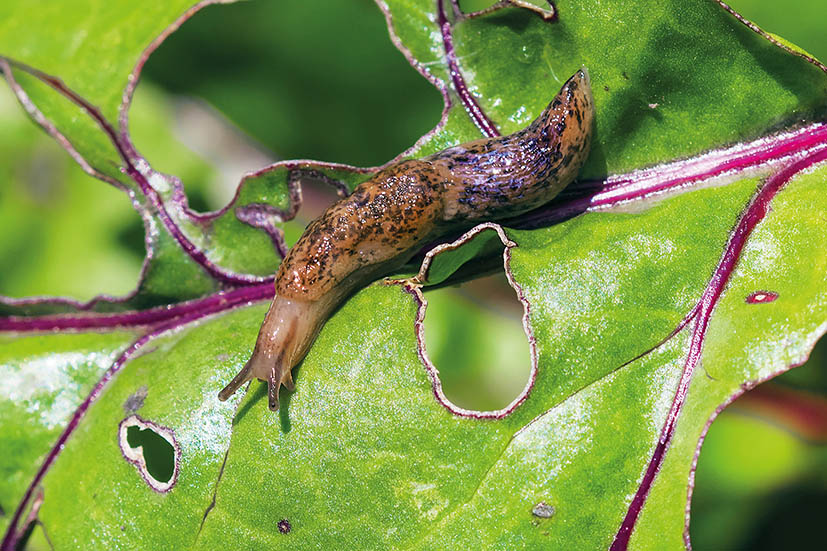Five tips for better slug control this autumn
2nd August 2022
The lead-up to harvest has been dry, so conditions have not been conducive for slug activity across much of the country. However, things can quickly change if the weather breaks and a pattern of regular rainfall kicks in.
This means growers must prepare for action to prevent economic damage to new crops, so Farmers Guide asked Certis Belchim technical specialist Harry Raley for his top tips as oilseed rape drilling commences this month:
Prepare optimal seed beds Crop residue can provide an ideal haven for slugs, so ensure it is well managed at harvest. This is particularly important where seed is direct drilled. Removal of residue is best for slugs, but where chopping straw, set the combine up to spread residue evenly across the swath width so there are no lumps.
Prepare fine and firm seed beds for drilling, as cloddy seed beds aid slug movement across the soil surface. Where heavy soil types make it difficult, earmark these higher-risk areas for monitoring once the crop is in the ground. Rolling can help consolidate after drilling and restrict slug movement.
Research has shown that slug populations remain static in space and time, so mapping of patches could be useful in the long-term.
Monitor crops through risk period Monitoring fields ahead of drilling a new crop can be useful, but the key to reducing crop damage is watching for slug activity once the crop is drilled. Vigilance should be maintained throughout a crop’s susceptible stages. For oilseed rape, this is from drilling to the four-leaf stage and wheat from drilling to early tillering (GS21).
Once slugs are found above the economic threshold (see box), or damage to the crop is observed, a slug pellet treatment should be applied at the nearest opportunity.
Choose the appropriate pellet Once there is a need to treat, careful consideration should be paid to the pellet product used, as not all are equal. Choosing a wet processed pasta-based formulation like Sluxx HP will provide the best palatability, durability, and ballistic properties for accurate spreading.
A pellet’s chelating agent is also important, as this is the substance in ferric phosphate pellets that ensures the active substance is absorbed into the slug’s gut. Certis Belchim pellets made with Ferric Field Technology contain EDDS, which has been proven to remain effective for longer in wet conditions than the EDTA contained in other formulations.
Think about baiting points Slugs are proven random feeders. Therefore, when a particularly vulnerable crop like oilseed rape is emerging, it’s important to have a high number of baiting points on the ground. This increases the chances of the pest bumping into the pellets before the seedlings.
The ferric phosphate mini pellet Menorexx is made with the same formulation as Sluxx HP but is smaller and provides more baiting points per kilogram. This helps stack the odds in favour of the crop when under slug pressure.
For example, Menorexx offers 67 baiting points/m2 at a 5kg/ha field rate, compared to 42/m2 at 5kg/ha of Sluxx HP. This means at an OSR plant population of 50/m2, slugs will be just over 10% more likely to bump into a pellet before the crop.
Later in the autumn, when conditions become wetter and more challenging, Sluxx HP will be the better choice, as the larger pellet will be inherently more durable.
Apply pellets accurately Unlike banned metaldehyde pellets, ferric phosphate baits are relatively environmentally benign and approved for use in organic production. However, that doesn’t mean that responsible and accurate application is no longer important. Input prices are also going up, so making the most of every application will help control costs.
Applicators should be NSTS tested by law every five years, but it is recommended that a professional test is carried out once a year ahead of the main pellet use period. Operators should also check setup and calibrate applicators regularly, particularly when switching between products, as pellets all have different ballistic properties.
To help with this, Certis Belchim offers the online Calibration Wizard tool, which provides settings for each of its products when using most applicators.
Entering the pellet and spreader type, spread width and application rate into the tool will provide operators with the correct applicator settings and forward speed for accurate application.
Online training
Brush up on your slug control and pellet application knowledge with a new BASIS Classroom Integrated Slug Control and Slug Pellet Application training module. It is worth two CPD points and can be accessed through the BASIS Classroom dashboard.

